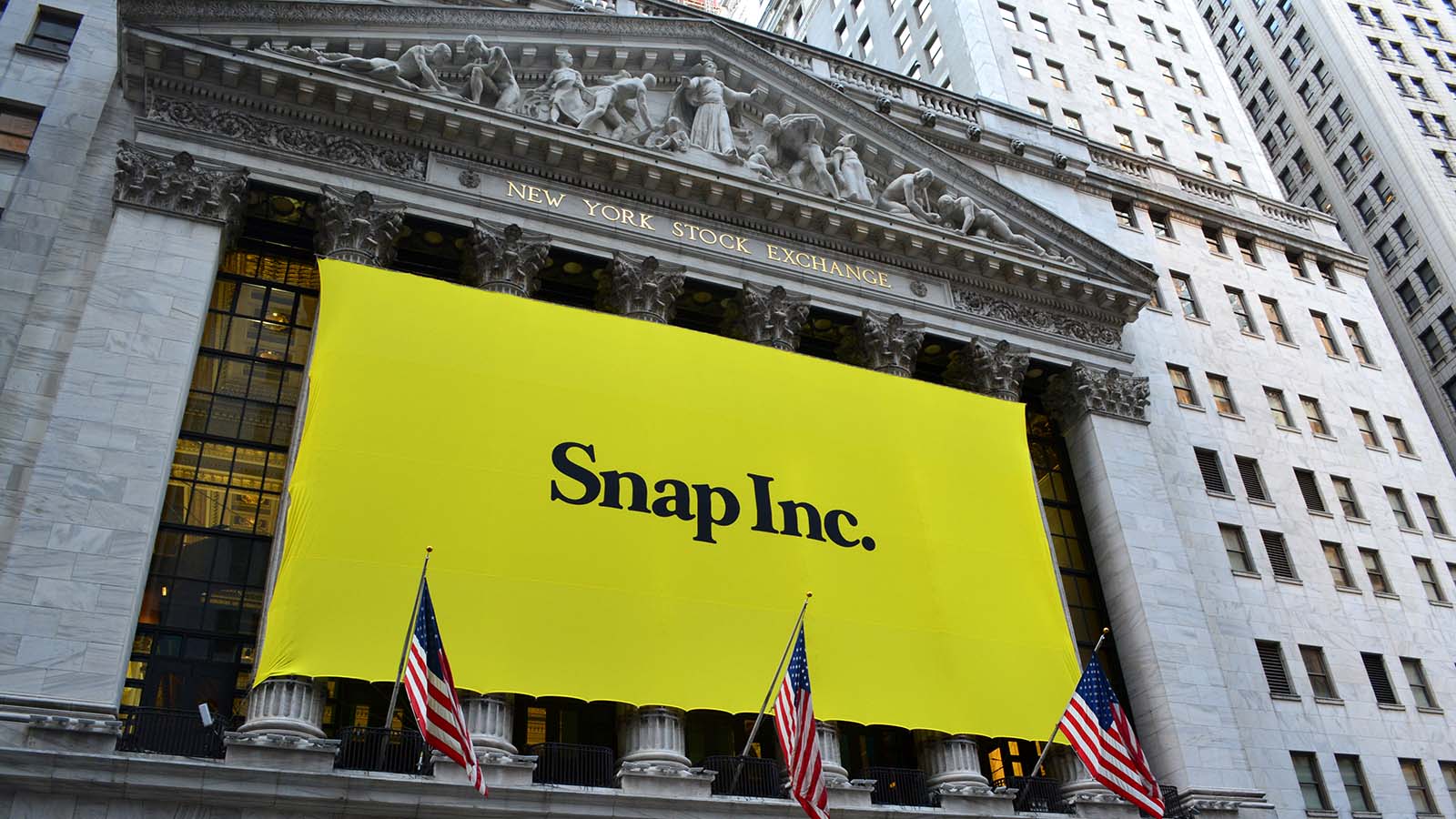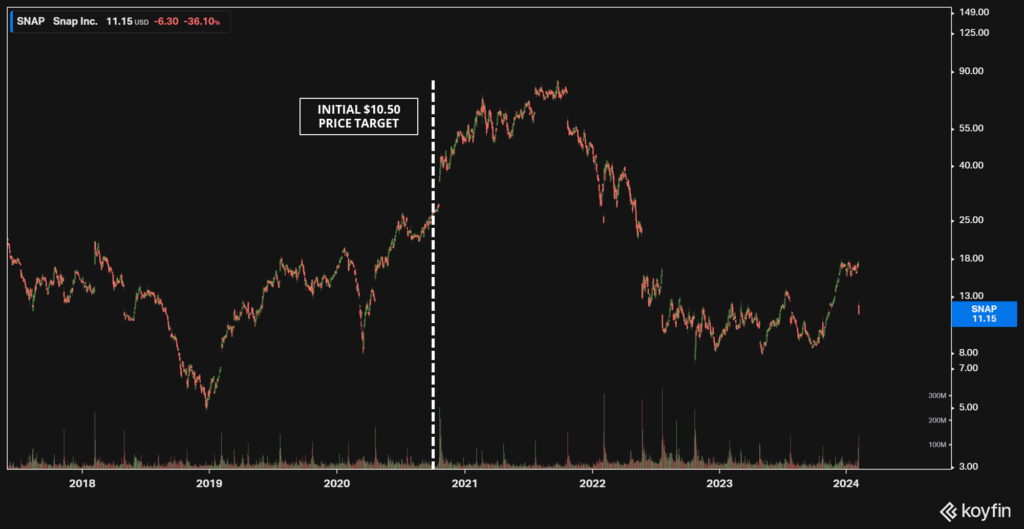Snap (NYSE:SNAP) stock plummeted 30% last week after announcing lackluster 2024 guidance. First-quarter sales are expected to grow only 13% to $1.11 billion, barely half of what rivals like Meta Platforms (NASDAQ:META) expect. Analysts expect profits at the Santa Monica-based firm to hit just $205 million this year, a quarter of its 2021 peak.
At its core, Snapchat faces a popularity problem. Rival platforms like TikTok and Instagram are keen innovators, and teens have increasingly turned to these video-first platforms. The average American now spends almost two-thirds of their time on social media watching videos, according to Bernstein.
That’s put pressure on companies like Snap, a company I warned investors about back in 2020.
The firm has struggled to overhaul its business to enter the “2.0” of social media. And now that Snap’s shares trade within a dollar of my original $10.50 price target, this represents my “I told you so” moment… with a little delay.
SNAP Stock: Fundamental Analysis Vs. Speculation
My process for determining Snap’s valuations was relatively straightforward. By taking Snapchat’s usage statistics from Sensor Tower and combining them with boots-on-the-ground observations about its business, I determined that the company was unlikely to exceed a compound 15% growth rate or surpass 20% EBIT (earnings before interest and taxes) margins through 2029. Few companies ever manage to sustain growth rates higher than that, and Snapchat seemed unlikely to pull off that feat. Google parent Alphabet (NASDAQ:GOOG, NASDAQ:GOOGL), for instance, only needed to sustain a 16.6% annual growth rate over the past decade to reach $307 billion in revenues last year.
Putting these figures into a 2-stage discounted cash flow (DCF) model yielded enlightening results. By assuming Snap’s revenues would increase to $8.7 billion by 2029 and EBIT margins remain at 20%, my model determined that Snap’s fundamental value sat at roughly $15 billion, or $10.50 per share. That represented a stunning 61% downside from its $27 share price at the time.
The Trend Is Your Friend
Reality, however, was more complex. In 2021, Snap logged a single year of unprecedented growth, driven by a surge of digital advertising. According to the Interactive Advertising Bureau (IAB), spending on digital advertising rose three times faster that year than the broader economy as brands jockeyed for eyeballs in the post-pandemic recovery period. Annual revenue growth at Snap itself topped 64%.
These new figures suddenly turned Wall Street wildly bullish. Snap’s stock price rose to $83, valuing the social media firm at $135 billion. To justify that valuation, Snap would have needed to sustain that 64% growth rate for the next five years and keep its growth rate north of 30% for the two decades after that, assuming no decline in profitability. That would have put Snap on track to generate $82 billion in revenues by 2029, almost 10 times more than the $8.7 billion originally expected.
In other words, investors simply extrapolated Snap’s 2021 performance as a straight line up.
But the honeymoon period would eventually end. In 2023, Snap only logged 12% sales growth after advertisers brought spending to more normal levels. And Snap’s 13% growth forecasts suggest this trend will continue through 2024.
That puts Snap’s fair value at… well.. the same $10.50 we started off with three years ago.
But Was I Wrong?
Nevertheless, Snap’s wild ride from $27 (when I first floated my $10.50 price target) to $83 and back to $11 shows the significant limitations of fundamental valuation. Although we might know a company’s intrinsic value, we have no idea what path share prices will take.
That presents a particular problem to short-sellers and options writers, two groups where timing is everything. If a position moves in the wrong direction, these contrarians must often liquidate it at a loss without any chance of recouping their principal. My own suggestion of shorting Snap would have left any short-seller in a terrible position until shares began sliding back in 2022.
To address this issue, I’ve since developed an AI-based stock-picking system that accounts for the momentum that high-volatility stocks regularly see. Today, the system believes that F-grade Snap shares only have 3.8% upside over the next six months, putting it in the bottom quintile of all tracked stocks. Downward earnings revisions and sinking shares tend to signal future underperformance.
Though it might be tempting to buy Snap on the dip, investors must do so knowing that neither fundamental valuation nor technical factors support a speedy recovery.
On the date of publication, Thomas Yeung held a LONG position in GOOG and GOOGL. The opinions expressed in this article are those of the writer, subject to the InvestorPlace.com Publishing Guidelines.

